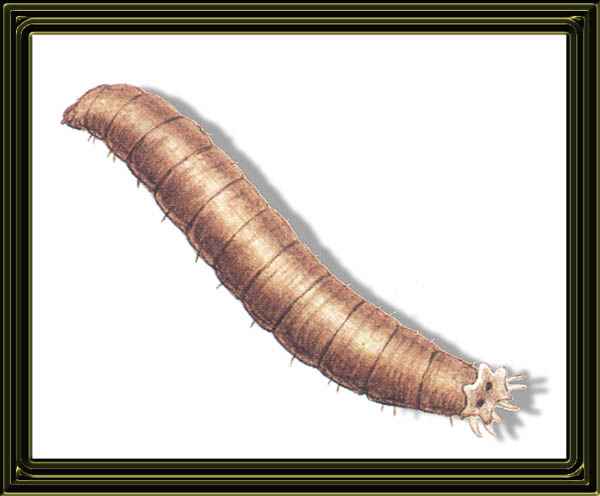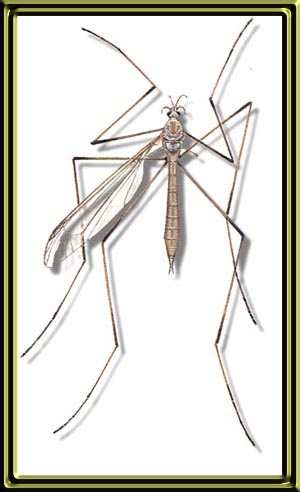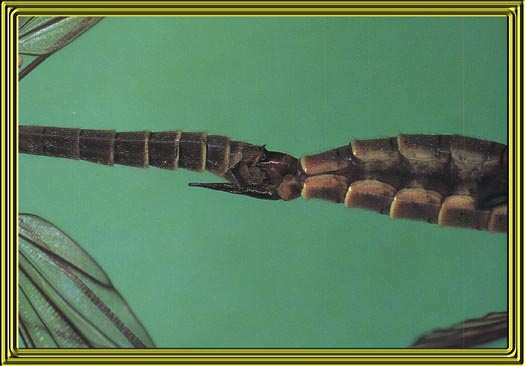

(Crane Fly or Daddy Longlegs)
Crane flies are among the animals which cause the most panic in a bedroom, apart from probably spiders, that is. Attracted by the light, they fly in the window and start to flap against lampshades of the main light or the bedside light...apart from this they do no harm at all. Craneflies are merely large flies. They do not feed as adults, nor do they bite or sting. The female lays eggs in the ground, where the larvae feed on vegetation, sometimes causing damage by gnawing at the roots of plants.
Crane fly larvae may also appear in thatch. They normally live in damp earth, and so it is only in old, damp, mossy thatched roofs that they can thrive. They themselves do little damage in a roof that has already suffered, but it becomes more serious if rooks or other birds discover this source of food and start to pull at the thatch in order to reach the larvae.
These rather leggy flies, sometimes referred to as Daddy Longlegs, have a tendency for the legs to break off when handled. Many crane flies are only mosquito-sized, but all can be recognised by the V shaped suture on the thorax together with a lack of ocelli. Larger species generally rest with the wings extended: smaller species generally fold their wings flat over the body and often bob up and down on their legs when at rest, hence their alternative name of "bobbing gnats". The female abdomen is pointed for laying eggs into the ground or other materials. Some females are wingless and can be seen on house walls in late autumn. Adults may lap nectar and other fluids but do not feed much. Larvae live mainly as scavengers in the soil or decaying matter, often under water. The larvae, pictured above, are often referred to as "leatherjackets".
Looking at the picture below that is of two craneflies mating, the female is recognisable on the right by her more swollen abdomen, this is because she is full of egss, as yet unfertilised. The abdomen tapers to a stylus like ovipositor, frequently mistaken for a sting. The male genitalia include a pair of claspers which grip the female genital valves but in order to do so the males abdomen has to be twisted through 180°.
